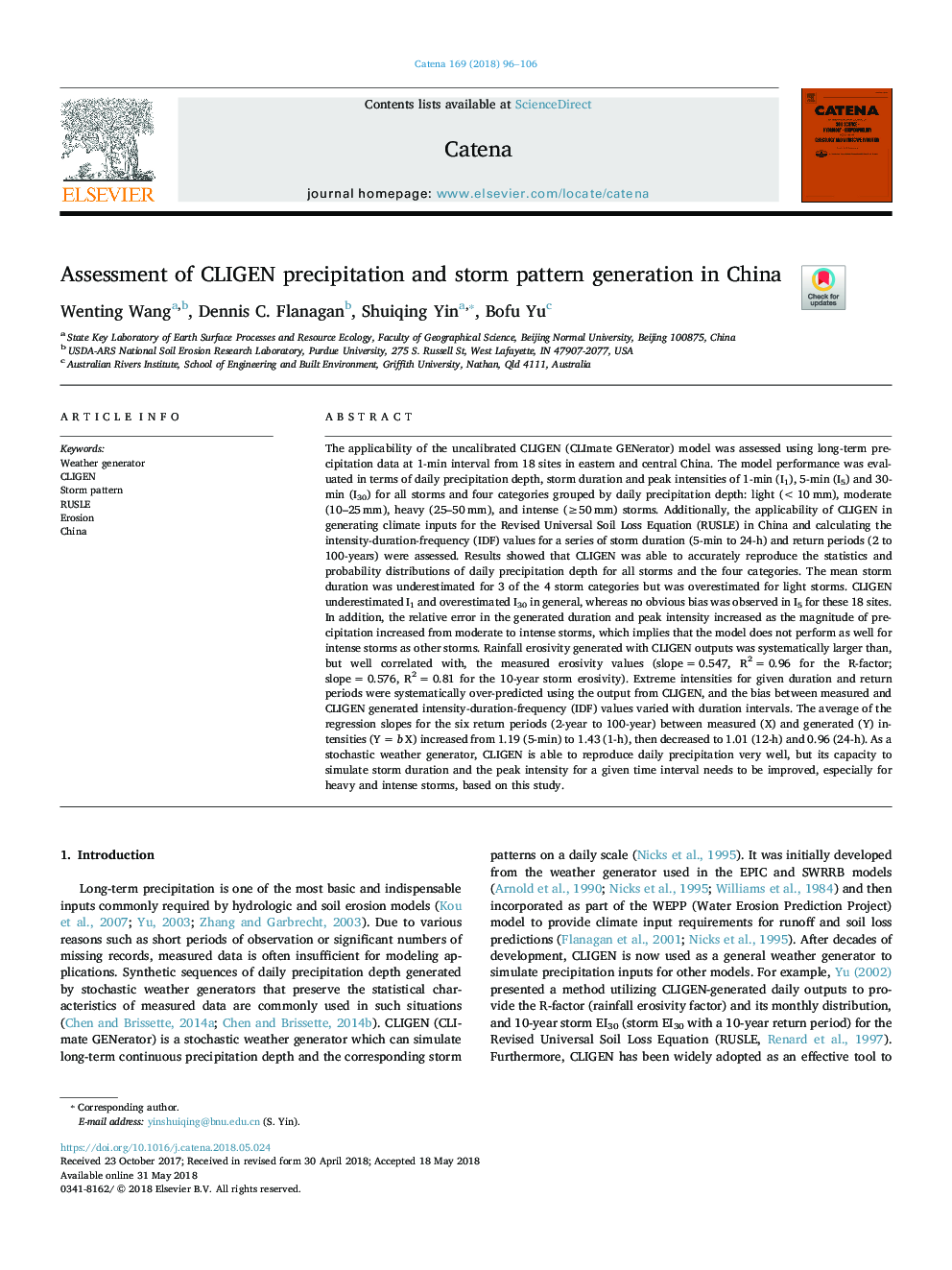| کد مقاله | کد نشریه | سال انتشار | مقاله انگلیسی | نسخه تمام متن |
|---|---|---|---|---|
| 8893416 | 1629185 | 2018 | 11 صفحه PDF | دانلود رایگان |
عنوان انگلیسی مقاله ISI
Assessment of CLIGEN precipitation and storm pattern generation in China
دانلود مقاله + سفارش ترجمه
دانلود مقاله ISI انگلیسی
رایگان برای ایرانیان
کلمات کلیدی
موضوعات مرتبط
مهندسی و علوم پایه
علوم زمین و سیارات
فرآیندهای سطح زمین
پیش نمایش صفحه اول مقاله

چکیده انگلیسی
The applicability of the uncalibrated CLIGEN (CLImate GENerator) model was assessed using long-term precipitation data at 1-min interval from 18 sites in eastern and central China. The model performance was evaluated in terms of daily precipitation depth, storm duration and peak intensities of 1-min (I1), 5-min (I5) and 30-min (I30) for all storms and four categories grouped by daily precipitation depth: light (<10â¯mm), moderate (10-25â¯mm), heavy (25-50â¯mm), and intense (â¥50â¯mm) storms. Additionally, the applicability of CLIGEN in generating climate inputs for the Revised Universal Soil Loss Equation (RUSLE) in China and calculating the intensity-duration-frequency (IDF) values for a series of storm duration (5-min to 24-h) and return periods (2 to 100-years) were assessed. Results showed that CLIGEN was able to accurately reproduce the statistics and probability distributions of daily precipitation depth for all storms and the four categories. The mean storm duration was underestimated for 3 of the 4 storm categories but was overestimated for light storms. CLIGEN underestimated I1 and overestimated I30 in general, whereas no obvious bias was observed in I5 for these 18 sites. In addition, the relative error in the generated duration and peak intensity increased as the magnitude of precipitation increased from moderate to intense storms, which implies that the model does not perform as well for intense storms as other storms. Rainfall erosivity generated with CLIGEN outputs was systematically larger than, but well correlated with, the measured erosivity values (slopeâ¯=â¯0.547, R2â¯=â¯0.96 for the R-factor; slopeâ¯=â¯0.576, R2â¯=â¯0.81 for the 10-year storm erosivity). Extreme intensities for given duration and return periods were systematically over-predicted using the output from CLIGEN, and the bias between measured and CLIGEN generated intensity-duration-frequency (IDF) values varied with duration intervals. The average of the regression slopes for the six return periods (2-year to 100-year) between measured (X) and generated (Y) intensities (Yâ¯=â¯b X) increased from 1.19 (5-min) to 1.43 (1-h), then decreased to 1.01 (12-h) and 0.96 (24-h). As a stochastic weather generator, CLIGEN is able to reproduce daily precipitation very well, but its capacity to simulate storm duration and the peak intensity for a given time interval needs to be improved, especially for heavy and intense storms, based on this study.
ناشر
Database: Elsevier - ScienceDirect (ساینس دایرکت)
Journal: CATENA - Volume 169, October 2018, Pages 96-106
Journal: CATENA - Volume 169, October 2018, Pages 96-106
نویسندگان
Wenting Wang, Dennis C. Flanagan, Shuiqing Yin, Bofu Yu,